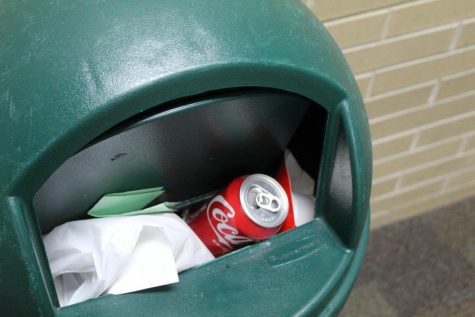Rising fake news phenomenon combatable
March 10, 2017
Hundreds of years before the onset of internet-based news, dishonest and unscrupulous printed media already existed. Now, however, because everyone with internet access has the ability to write their own news, what is now known as “fake news” has become unrestrained.
Referred to as yellow journalism in the mid 1890s, current events were heavily exaggerated and even made up at times. Yellow journalism was consequently used as a significant form of propaganda.
William Randolph Hearst and Joseph Pulitzer have been cited as central sources for the United States’ entry into the Spanish-American War. Both authors were found to have overemphasized poor conditions in Cuba and the brutality of Spain in order to promote going to war.
Yellow journalism was printed in major, reputable newspapers. However, throughout the 20th century, several tabloid newspapers
emerged, such as “National Enquirer” and “The Sun.” These newspapers are still printed today and have garnered a reputation of being untrustworthy. As a result, most readers have chosen to not rely on them as reliable source of information.
Now, however, the line between authentic and deceitful online journalism has been blurred. Because of the variety of trustworthy news websites available, some readers assume all news to be credible. On the other hand, a tactic known as “website spoofing” is used to mislead readers into thinking one website is another. For example, a fake news website may disguise itself as a trusted source, like ABC News. Readers under the impression that the website is reliable are more inclined to believe its false information.
Major websites, such as Google and Facebook have become unintentional intermediaries of fake news to unsuspecting readers, as well. Facebook’s Instant Articles and Google’s AMP are services that change the formatting of news articles
in order to allow them to load faster. The majority of these articles look very similar to each other, making it more difficult to distinguish trusted news from fake news.
Furthermore, during the 2016 U.S. presidential election, legitimate news was shared less on Facebook than fake news. A study from Northwestern University found that 30 percent of all fake news traffic could be traced back to Facebook, while only 8 percent of authentic news could be found there.
The past presidential election provoked a major outbreak of fake news in the United States. Throughout the entire election, fabricated stories were written in attempt to further a particular person or group’s agenda. Various false reports consisted of attacks targeting both sides of the political spectrum, from Pope Francis endorsing Donald Trump to Democratic Party leaders being involved in a fictitious child trafficking ring.
These stories, among many others, have led Americans to have a greater sense of distrust in online
media. A recent Pew Research poll found that over 64 percent of U.S. adults believe that “a great deal of confusion” exists about current events due to false reporting. Moreover, 23 percent of those polled confessed to personally sharing fake news, with or without being initially aware of its lack of authenticity.
Political leaders were quick to condemn the spread of fake news. Both presidential candidates continuously voiced their shared opinion of it being a bipartisan issue with a serious danger to America. Many leaders in the private sector expressed similar beliefs and took action, such as Facebook CEO Mark Zuckerberg committing to limiting the inaccurate news on the social media website.
The newfound spread of fake news has established itself as a significant threat to individuals’ trust in honest journalism. While actions may be taken to limit the creation of fake news, observant, critical and attentive reading by each individual can help make its impact nonexistent.






